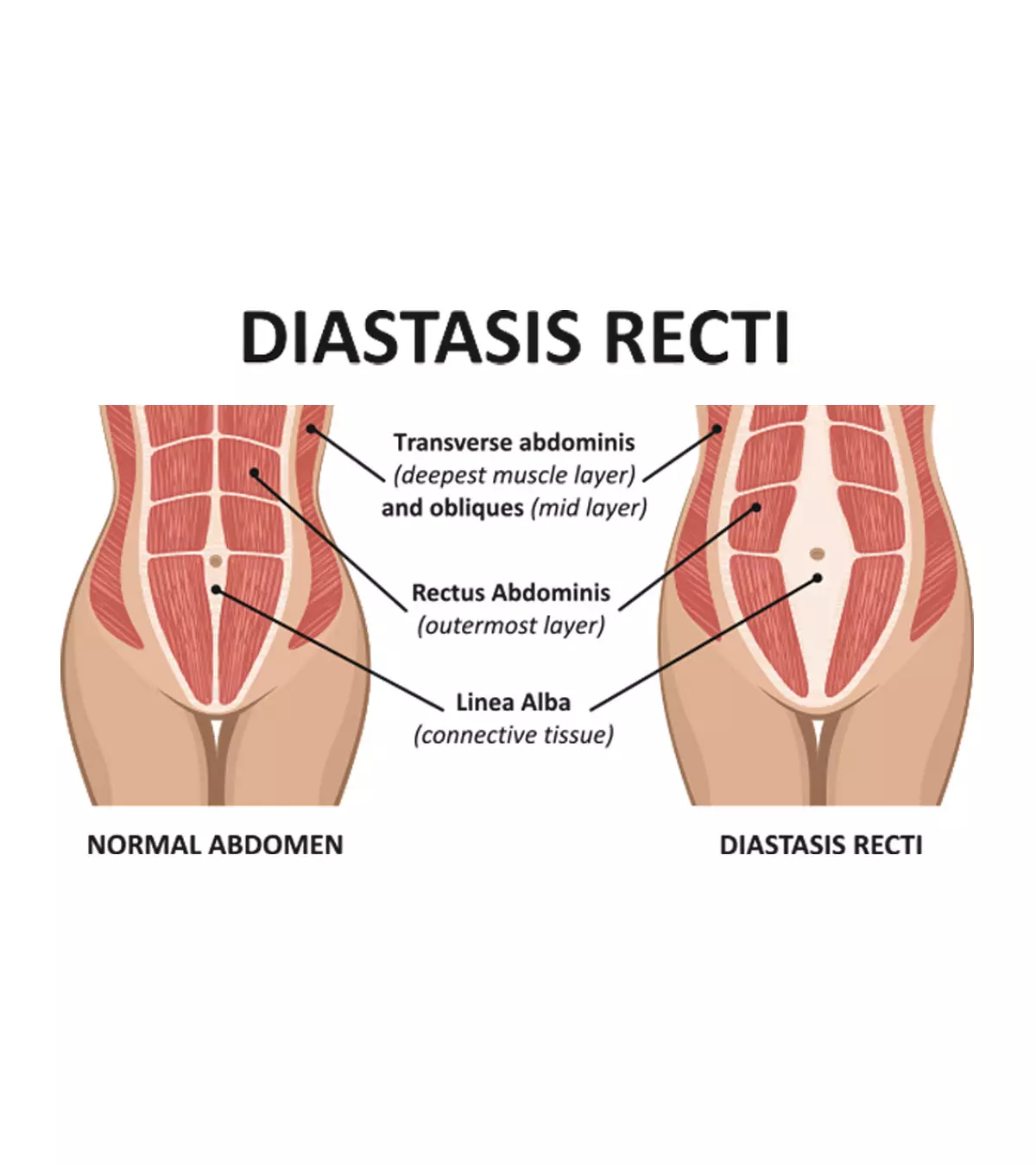
Image: Shutterstock
Parents need to understand growth spurts in children, as these phases signify physical growth and impact a child’s behavior and nutritional needs. Recognizing these changes can help parents provide timely support to ensure healthy development. Toddler growth spurts may occur between the ages of one and three years. Toddlers grow a few inches and gain a few pounds each year of toddlerhood (1). Growth spurts are periods when a toddler has sudden and intense growth. As a result, they may appear hungrier and need more food than usual to meet the extra energy needs due to rapid growth. Additional supplements or treatments are not required during growth spurts unless the toddler has some nutritional deficiencies. The growth rate is periodically reviewed during pediatric visits using growth charts. Doctors may prescribe supplements if needed. Read on to learn more about the signs of toddler growth spurts, ways to estimate height, and reasons for short stature.
Key Pointers
- Toddler growth spurts happen during the first three years of their lives.
- The growth spurts are characterized by the child’s height, weight, appetite, or sleeping more hours at a stretch.
- Nutritional deficiencies, sleep, other medical conditions may also impact the child’s height.
When Do Toddlers Grow?
A child grows in phases, and it is not a continuous process. You may observe a sudden increase in growth and then a stable phase. A toddler’s growth milestones may include the following stages (2).
- Year one: In their first year of life, a baby may gain half a pound per month and grow taller by four to five inches.
- Year two: Your toddler may gain three to four pounds and grow taller by three to four inches in the second year.
- Year three: Your toddler may grow two to three inches taller and gain four to six pounds of weight in the third year.

After the completion of three years, the rapid growth may decrease, and they may have growth spurts again only during puberty. However, the height and weight of your child will continue to increase gradually. Usually, they may gain nearly six pounds and grow two inches taller per year during the school ages.
What Are The Signs Of Toddler Growth Spurts?
The following signs are often associated with toddler growth spurts.
- Increased hunger
- Sleeping more number of hours at a time
- Increase in height and weight
- Some toddlers may complain of leg pain and often wake up from sleep during growth spurts.
Children usually outgrow this phase without specific signs and symptoms.

How Tall Would A Toddler Be?
When it comes to a child’s height, genetics plays a significant role as a child’s height predictor (3). According to the American Academy of Pediatrics, tall parents usually have tall children, and short parents usually have short children. “Those are the realities of genetics,” adds the academy (4).
The average height of a toddler is mostly calculated based on the parent’s height rather than comparing it with a similar age group. You can use the mid-parental height formula to determine the projected adult height of your toddler in inches (5).
- Girls: [(Father’s height in inches – 5) + Mother’s height in inches] divided by 2
- Boys: [(Father’s height in inches + 5) + Mother’s height in inches] divided by 2
The formula represents the projected height, and there could be variations since a toddler’s adult height depends on other factors, as well.
Besides genetics, the following factors may cause changes in height (6).
- Nutrition: Toddlers with malnutrition may not achieve their natural growth rate.

- Medical problems: Thyroid abnormalities, chromosomal anomaliesiGenetic conditions that develop when there are errors in the division of cells as the baby develops in the womb , kidney problems, gastrointestinal diseases, such as celiac diseaseiAn autoimmune and genetic condition characterized by an immune reaction to gluten, the protein found in barley, rye, and wheat and other malabsorption disorders, heart defects, and food allergies may reduce the growth rate in toddlers.
- Sleep: Inadequate sleep may hinder toddlers’ growth and development since the growth hormone is mainly released during sleep. A study shows that 20–30% of young children and infants struggle with falling asleep and staying asleep as they develop (7).
- Psychosocial growth failure: Stress and poor emotional health of a child may result in a slower growth rate.
Toddlers may begin to grow after the correction of nutritional deficiencies, treatment of diseases, and when they are moved to a supportive and safe environment. However, genetic factors cannot be changed.
Jennifer, a mom of triplets shares how each one is growing taller at their own speed, “My children share a birth date and were cohabitants in my womb for almost 7 months. Today as they were playing after school I slowed them down to document the vast difference in their height. Based on the rate at which the boys’ pants have been ‘shrinking’ I knew we were in some sort of a growth spurt–especially R [my son]. The difference in his height and K’s [my daughter’s] is huge. One minute apart in birth–half a head apart in height (i).”
What Might Cause A Toddler To Have A Short Stature?
The primary cause of short stature is usually inherited genes from the parents (8). Growth delay and medical conditions could be the other causes. Most healthy toddlers grow at a regular rate and enter puberty at an average age. They may reach an estimated height at puberty. Medications, supplements, or treatments to increase height are not recommended for children.
Some children may have short stature due to growth delay. Although they had normal growth during the early months of life, some babies may fall below the average growth between six months and two years. Some may grow after this age and catch up to adult height. It is more common in boys than girls. This is a natural process, and treatments are not required.
If short stature is due to a deficiency of growth hormone, a pediatrician may prescribe growth hormone injections based on the growth chart and parental height.
 Point to consider
Point to considerHow To Support Your Toddler During A Growth Spurt?
Growth spurts can be tough on toddlers, making them hungrier, sleepier, and sometimes cranky. Here’s how you can help your toddler during this time (9):
- Offer healthy meals. Toddlers may eat more during a growth spurt. Give them balanced meals with fruits, veggies, proteins, and whole grains to help their body grow.
- Make sure they get enough sleep. Growth spurts can make toddlers more tired. Help them stick to a good bedtime routine to ensure they get enough rest.
- Keep them hydrated. Water is important during growth spurts. Make sure your toddler drinks enough fluids throughout the day.
- Be patient and supportive. Your toddler might feel more sensitive or frustrated during this time. Stay calm, offer comfort, and reassure them.
- Track their growth. Pay attention to their weight, height, and any changes in appetite or sleep. If anything seems off, talk to your pediatrician. The pediatrician will assess your child’s growth trajectory since birth and will confirm if anything needs to be addressed.
Neha, a mother who was once concerned about her child’s height and weight, shares how her doctor helped ease her worries. She recalls, “I am thankful to my son’s pediatrician for suggesting the use of a growth chart to track our son’s growth. My child’s regular growth monitoring made me sure that there’s nothing to worry about his height and weight (ii).”
- Encourage light play. While they might feel more tired, gentle play like running or stretching helps them grow and stay active.
Supporting your toddler with the right food, sleep, water, and emotional care will help them get through their growth spurt more easily.
Frequently Asked Questions
1. Do toddlers get fussy during growth spurts?
Yes, the various changes during a growth spurt may make your child more irritable and fussier. If an unexplained fussiness lingers for more than a week, speak to a doctor (9).
2. How long does a toddler growth spurt last?
Growth spurts in babies are shorter and may last up to three days, while a child or teenager growth spurt may continue for one week (9).
3. Are there any long-term effects of a toddler growth spurt?
Growth spurts in toddlers are not known to cause any long-term effects. They are a normal aspect of development, and minor discomforts such as increased fussiness, changes in sleeping and eating patterns, and emotional changes are temporary. Therefore, they may be present until the child reaches physical maturity (9).
4. Can growth spurts cause tantrums?
According to New York-based board-certified pediatrician Dr. Cherilyn Cecchini, “Growth spurts may also lead to tantrums and emotions like crying in your little ones. The body is spending a lot of energy on growing, which can be tiring! Recognizing and expressing fatigue to a young child may look like tantrums and big emotions. To help, ensure your toddler gets plenty of nutrition and rest (and snuggles)!”
A toddler’s growth spurts are a natural part of their development. During the first three years of life, there are several growth surges. Toddler growth spurts result in various physical, behavioral, and cognitive changes, including increased eating, sleep disturbances, increased height and weight, and so on. Each toddler goes through a growth spurt at a different period and rate. Despite their development spurts, some toddlers may be shorter than others. A child’s height is determined by genetics, nutrition, maturation, and underlying medical issues, among other factors.
Infographic: How To Support A Toddler’s Growth Spurt?
You may notice specific changes in your toddler’s behavior and routines when they experience a growth spurt. Therefore, they may require additional parental support during this time. This infographic has listed some helpful tips to support and care for a toddler during a growth spurt. Illustration: Momjunction Design Team
Illustration: Signs Of Toddler Growth Spurt And Timeline

Image: Stable Diffusion/MomJunction Design Team
Growth spurts are a normal part of a baby’s development. Learn how to recognize the signs and when they usually occur.
Personal Experience: Sources
MomJunction articles include first-hand experiences to provide you with better insights through real-life narratives. Here are the sources of personal accounts referenced in this article.
i. Growth Spurts;
https://lotsofscotts.blogspot.com/2011/01/growth-spurts.html
ii. Growth Indicators To Track Growth In Children;
https://growingwithnemit.com/growth-indicators-children-india-firststeptogrowright/
References
- The Growing Child: 3-Year-Olds; Johns Hopkins Medicine
- Child Development Guide: 3 Years; Children’s Hospital of Orange County
- Is height determined by genetics?; MedlinePlus; The United States National Library of Medicine
- Physical Changes During Puberty; American Academy of Pediatrics
- Evaluation of Short and Tall Stature in Children; The American Academy of Family Physicians
- Height Calculator – Best Child Height Predictor; MDApp
- Wang, Szu, et al.; (2024); Sleep Problems during Early and Late Infancy: Diverse Impacts on Child Development Trajectories across Multiple Domains; Sleep Medicine
- When a Child is Unusually Short; Healthychildren; The American Academy of Pediatrics
- Growth Spurts & Baby Growth Spurts; Cleveland Clinic
- Growth and Your 1- to 2-Year-Old; Nemours Children’s Health
- Predicting a Child’s Adult Height; American Academy of Pediatrics
- Xiwen Li et al.; A Meta-Analysis of the Efficacy and Safety of Using Oil Massage to Promote Infant Growth; Journal of Pediatric Nursing
Community Experiences
Join the conversation and become a part of our nurturing community! Share your stories, experiences, and insights to connect with fellow parents.
Read full bio of Dr. Anuradha Bansal
- Dr. Cherilyn Cecchini is a board-certified pediatrician with about seven years of experience. She did her medicine at Thomas Jefferson University and is the founding member of the medical advisory board at Andwise.
 Dr. Cherilyn Cecchini is a board-certified pediatrician with about seven years of experience. She did her medicine at Thomas Jefferson University and is the founding member of the medical advisory board at Andwise.
Dr. Cherilyn Cecchini is a board-certified pediatrician with about seven years of experience. She did her medicine at Thomas Jefferson University and is the founding member of the medical advisory board at Andwise.
Read full bio of Dr Bisny T. Joseph
Read full bio of Rohit Garoo
Read full bio of Shinta Liz Sunny





 Did you know?
Did you know?










